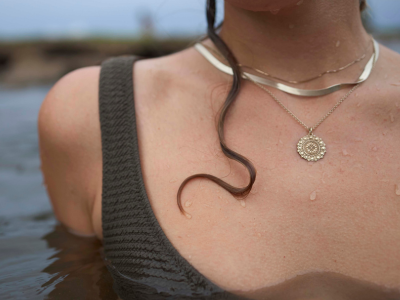
How to test your hair elasticity
We spend so much time (and money) on hair care searching for the perfect shampoo, investing in treatments, and following the latest hair trends. But what if the real key to healthy, resilient hair isn’t about piling on products, but about truly understanding what your hair needs?
If you’ve ever wondered why your hair feels dry and brittle no matter how much you hydrate it, why it breaks easily when you brush it, or why your curls don’t hold the way they used to, the answer might lie in your hair’s elasticity.
What is hair elasticity and why is it important?
Hair elasticity refers to the hair's ability to stretch and return to its original shape without breaking. This characteristic is a key indicator of hair health, reflecting the balance between protein and moisture within the hair shaft. Proper elasticity contributes to hair's strength, resilience, and overall appearance. Hair with good elasticity is less prone to breakage, holds styles better, and appears more vibrant. Conversely, poor elasticity can lead to brittleness, dullness, and difficulty in managing hair.

Simple hair elasticity test
Assessing hair elasticity helps in understanding the hair's structural integrity. To evaluate your hair's elasticity, follow these steps:
- Prepare the hair strand: Select a single strand of hair from your head. It's recommended to perform this test on clean, damp hair without any product for accurate results.
- Stretch the strand: Gently hold the hair strand between your fingers and slowly stretch it.
-
Observe the reaction:
- Balanced elasticity: If the hair stretches slightly and returns to its original length without breaking, it indicates a healthy balance of moisture and protein.
- Low elasticity: If the hair stretches very little or breaks almost immediately, it suggests a lack of elasticity, making the hair brittle.
- High elasticity: If the hair stretches significantly and doesn't return to its original shape or breaks after extensive stretching, it indicates over-elasticity, and makes it more prone to being limp and lifeless.
Now what?
Based on the test results, consider the following adjustments to your hair care routine:
-
For low elasticity:
- One of the most common causes of low elasticity is a lack of moisture. Give those parched strands an injection of hydration by incorporating hydrating shampoos, conditioners, and leave-in treatments containing ingredients like aloe vera and glycerin hyaluronic acid, panthenol and squalene.
- Regularly using deep conditioning treatments containing ingredients like shea butter, jojoba oil and argan oil to lock that moisture in and soften the hair.
-
Nourish deeply from within, the root of healthy hair. Supplements with hyaluronic acid help attract and retain moisture at a cellular level, while omega fatty acids strengthen the hair’s
natural barrier, reducing dryness and breakage. Together, they support deep, lasting hydration for softer, healthier, more resilient hair. Crowning Glory has been designed with hydration in mind.
-
For high elasticity:
- A lack of protein will make your strands too stretchy and more prone to breakage. Give your locks some reinforcement by opting for: protein-rich treatments to strengthen the hair shaft and restore the protein content.
- Taking a break from the heat and chemical processing. High heat and overprocessing from bleaching, coloring, or chemical treatments can damage the protein structure, causing hair to become fragile and overly elastic.
- Feeding your hair with the necessary building blocks, and that starts with protein. Plant-based proteins and amino acids in supplements help reinforce hair structure, reducing breakage and improving elasticity. Vitamin C plays a key role too, supporting natural collagen and elastin production, which keeps hair flexible, healthy, and vibrant.
Regularly assessing your hair's elasticity allows you to tailor your hair care routine effectively, promoting stronger, more resilient hair. Curate a personalised regimen, tailored to your specific needs with My Hair Analysis.


